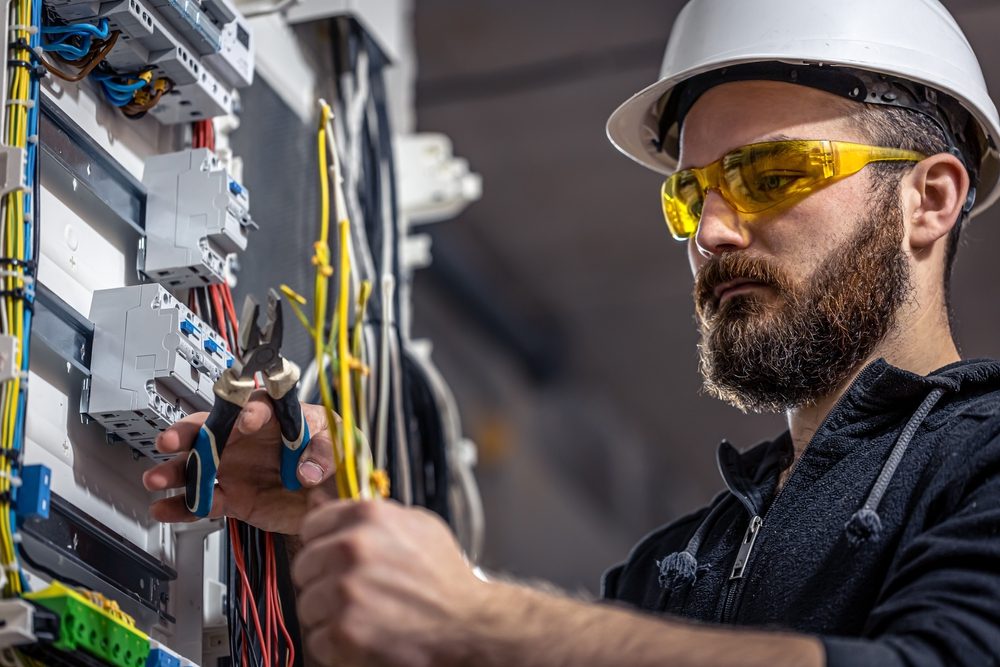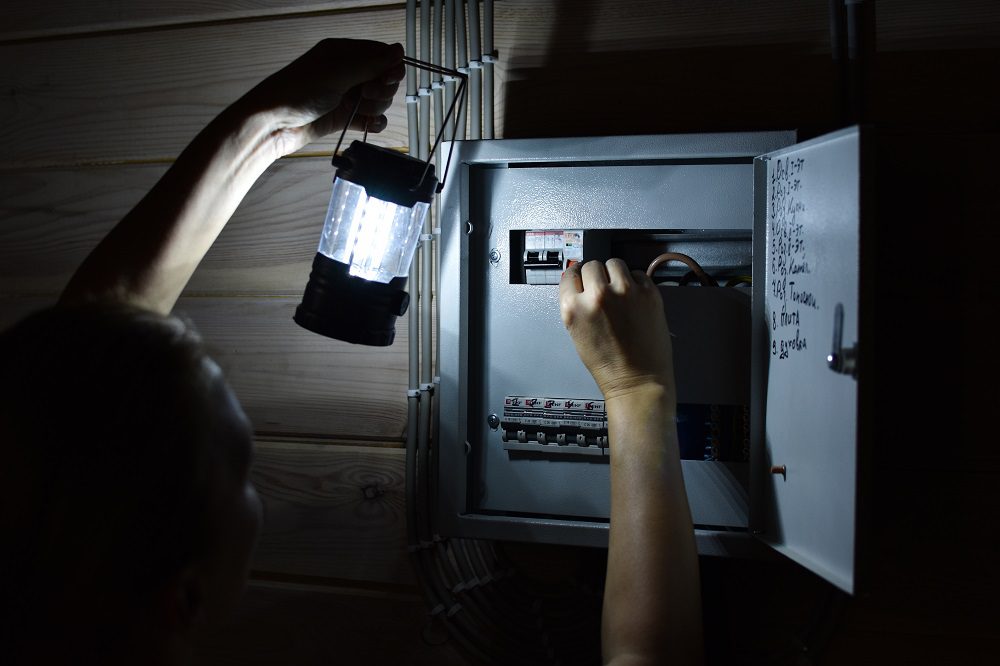Homeowners in Charlotte often ask a simple question with big implications: what is electrical repair? In plain terms, electrical repair means diagnosing, fixing, or replacing parts of a home’s electrical system so it works safely and reliably. That includes circuits, wiring, outlets, switches, lighting, panels, breakers, and the devices that connect to them. Good repair work restores function and removes hazards like overheating conductors, arcing connections, and overloaded circuits.
This topic matters in Charlotte, NC because our housing stock is a mix of 1950s ranch homes, 1990s subdivisions in Ballantyne, and newer townhomes across South End and NoDa. Each era brings different issues. Aluminum branch wiring shows up in some older homes, GFCI and AFCI protection may be missing in mid-90s builds, and newer homes can still suffer from poor terminations or overloaded circuits after kitchen remodels. An electrician who works these neighborhoods daily brings context that cuts diagnostic time and cost.
What electrical repair covers
Electrical repair can be as simple as swapping a cracked outlet in Dilworth or as involved as replacing a corroded service panel in Plaza Midwood. It starts with testing. A licensed electrician uses a multimeter, non-contact voltage tester, and often an infrared camera to find heat spots or loose terminations. From there, repair steps may include tightening lugs, replacing devices, splicing damaged conductors with proper connectors, installing code-required protection, or rewiring short runs with copper.
Work is performed to the National Electrical Code as adopted by the City of Charlotte and Mecklenburg County. Permits apply for service changes, panel replacements, new circuits, and many remodels. Small device swaps typically do not require a permit, but judgment matters. A quick outlet swap can reveal a bootleg ground or shared neutral that changes the scope. Professionals flag those issues and discuss options before proceeding.
Common examples Charlotte homeowners see
Flickering lights during thunderstorms in Steele Creek mean a loose neutral connection is likely. The flicker can show up across multiple rooms because the neutral ties circuits together at the panel. Heat at the neutral bar or a weak utility service connection can be the cause. Tightening and cleaning terminations often solves it, but sometimes the meter base or service drop needs attention in coordination with Duke Energy.
Tripping breakers on a kitchen circuit in Highland Creek often trace back to toaster ovens and microwaves on the same 20-amp line. Kitchens should have at least two small-appliance circuits. If the home has only one, adding a dedicated circuit reduces nuisance trips and improves safety. In the process, an electrician may upgrade to GFCI/AFCI protection per code.
Dead outlets in a bedroom cluster in Matthews usually point to a backstabbed receptacle Ewing Electric Co electrical repair Charlotte NC upstream. Older installs pushed conductors into spring holes on the back of the device. Over time, heat and vibration loosen the contact. Moving those conductors to the screw terminals or using new spec-grade receptacles restores continuity.
A warm light switch in Myers Park commonly indicates an oversized dimmer running modern LED loads. Legacy dimmers waste heat and cause flicker. The fix is a LED-rated dimmer matched to the driver type and a check of the box fill to make sure it meets code.
Burnt smell near the panel in University City often comes from a loose breaker lug or double-lugged neutral. Thermal scanning finds the hot spot. The remedy is to move neutrals to individual terminals and torque all connections to manufacturer specs. If the bus shows damage, the right move is a panel replacement, not a band-aid.
Typical costs in Charlotte, NC
Pricing varies by access, parts, and permit needs. These ranges reflect recent jobs across Charlotte neighborhoods:
- Service call diagnosis: 89 to 159 for the first hour, then standard hourly rates if approved to proceed. Many issues resolve within that first hour if parts are on the truck. Outlet or switch replacement: 95 to 195 per device for standard parts; GFCI 125 to 225 each; smart switches 175 to 325 depending on brand and neutral availability. Lighting fixes: 125 to 350 to repair a circuit or replace a standard fixture; 350 to 650 for chandelier or high-ceiling work requiring special ladders. Breaker replacement: 125 to 225 for standard breakers; 185 to 325 for AFCI or dual-function breakers. New 20-amp kitchen circuit: 350 to 900 depending on run length and wall access; permits may add 50 to 100. Panel repair or tune-up: 175 to 450 for terminations, labeling, and minor part replacements. Panel replacement: 1,800 to 3,800 for a typical 150–200 amp main service, including permit and inspection. Service upgrades can run higher if the meter base or mast requires replacement. EV charger circuit: 550 to 1,400 based on distance, amperage, and load calculation.
These figures assume standard conditions. Plaster walls in older bungalows, brick surfaces, or finished basements can add labor. Good electricians discuss route options and patching expectations before cutting.

The three types of electrical problems
Electricians see issues fall into three broad categories. This framework helps homeowners describe symptoms and choose next steps.
Performance problems: Lights dim when a heat pump starts, a garage opener strains, or a microwave trips a breaker during peak usage. The root cause is usually voltage drop, overloaded circuits, or loose neutrals. The fix may be as small as redistributing loads or as big as adding dedicated circuits or upsizing wire on long runs. In older ranch homes, shared neutrals in multi-wire branch circuits can also cause cross-circuit dimming and require handle-tied breakers or a two-pole breaker.
Safety problems: Hot outlets, buzzing switches, tingling from metal fixtures, or a GFCI that refuses to reset. These issues may indicate reversed polarity, missing equipment grounding, damaged insulation, or water intrusion. The repair could involve correcting polarity, replacing damaged devices, adding GFCI/AFCI protection, bonding metal boxes, or rerouting conductors away from moisture. If a customer reports a shock, the visit moves to the top of the schedule.
Reliability problems: Intermittent power loss, random trips, or electronics failing more often than they should. Loose terminations, backstabbed receptacles, worn breakers, and poor splices are common culprits. Infrared scans and circuit-by-circuit testing isolate the weak link. Replacing backstab connections with screw terminals and upgrading to spec-grade devices usually restores long-term reliability.
What is electrical repair vs. replacement or upgrade
Not every situation calls for a full upgrade. Electrical repair focuses on restoring proper function and safety in the existing system. Replacement steps in when a component is at end-of-life or damaged beyond safe use, like a panel with a burnt bus. An upgrade is proactive: adding capacity for a remodel, installing whole-home surge protection, or running a dedicated circuit for a sauna.

A practical electrical repair Charlotte NC rule in Charlotte’s housing stock: if a component has visible heat damage, frequent nuisance tripping after proper load balancing, water exposure, or a known recall history, replacement beats repeated repair. Examples include certain obsolete panels, corroded meter bases, or aluminum branch circuits with recurring hot connections that warrant an approved connector system or rewiring.
How professionals diagnose quickly and safely
Good diagnosis saves money. The process is simple but thorough. The electrician interviews the homeowner, checks the panel for labeling and heat, tests neutrals and grounds, then works upstream from the symptom. For a dead outlet run, the team locates the first working device on the chain and opens that box first. In many Charlotte homes, that box sits behind a couch or dresser where vacuum cords have tugged on the device for years. That small detail often points right to the failure.
Load calculations matter. Before adding a double oven or Level 2 EV charger, the electrician runs a calculated load based on square footage, appliances, and HVAC. This prevents main breaker trips on hot August afternoons and avoids rework after an inspector review.

Permits and inspections provide guardrails. On panel swaps and new circuits, an inspector checks grounding electrodes, bonding, conductor sizes, torque, and labeling. This oversight keeps work consistent across neighborhoods from Providence Plantation to Mint Hill.
Simple homeowner checks before calling
A few safe checks can save a visit or make the visit faster:
- Test the GFCI or AFCI reset on the circuit serving the dead outlets, including garage, exterior, kitchen, and bathroom. One tripped GFCI upstream can shut off several outlets. Note the timing. Do lights flicker only when the dryer or heat pump starts? Share that detail. It speeds diagnosis.
If there is a burning smell, sparking, signs of water in a device, or a warm panel, stop using the circuit and call an electrician immediately.
How Ewing Electric Co. approaches repairs in Charlotte
Ewing Electric Co. works across Charlotte, from SouthPark condos to Huntersville two-stories. The team schedules tight arrival windows, stocks common parts on each truck, and gives clear, written pricing before work begins. Technicians torque terminations to manufacturer specs, label circuits clearly, and photograph repairs for records. That means fewer callbacks and easier future service.
On older homes, the team explains practical options: repair now with a code-compliant fix, plan a panel or circuit upgrade later, or bundle work to reduce permit and inspection visits. For condos and townhomes, they coordinate with HOA rules and service room access. For EV chargers, they run proper load calculations and help select a charger that fits the home’s capacity rather than pushing oversized gear.
Signs it is time to schedule an electrician
Charlotte homeowners should book service if breakers trip repeatedly after load balancing, devices feel warm to the touch, outlets lack grounding, lights flicker across multiple rooms, or remodel plans include new high-draw appliances. These issues point to the need for professional evaluation and corrective work that solves problems at the source rather than masking symptoms.
Ewing Electric Co. is local, responsive, and familiar with the quirks of Charlotte homes. For clear answers and safe, code-compliant electrical repair, call or request a visit online. The team will diagnose the issue, explain options in plain language, and complete the repair with care so the home runs the way it should.
Ewing Electric Co provides dependable residential and commercial electrical services in Charlotte, NC. Family-owned for over 35 years, we handle electrical panel upgrades, EV charger installation, generator installation, whole-home rewiring, and 24/7 emergency repairs. Our licensed electricians deliver code-compliant, energy-efficient solutions with honest pricing and careful workmanship. From quick home fixes to full commercial installations, we’re known for reliable service done right the first time. Proudly serving Charlotte, Matthews, Mint Hill, and nearby communities.
Ewing Electric Co
7316 Wallace Rd STE D
Charlotte,
NC
28212,
USA
Phone: (704) 804-3320
Website: https://ewingelectricco.com/ | Google Site
Social: Facebook | Instagram | Twitter
Map: View on Google Maps